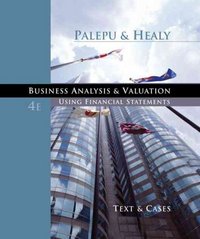



1. Suppose the CAPM holds. Suppose risk-free rate is 2% and market risk premium (E(Rm) rf)) is 8%. What kind of stocks (in terms of their beta) should have expected return that is negative? 2. Suppose CAPM holds. Suppose stocks X and Y have betas of -1 and 1, and their expected returns are -5% and 15%, respectively. What is the risk-free rate, and what is the market risk premium (E(Rm) rf))? Hint: you can either solve this problem graphically, or remind yourself how to solve a system of two equations with two unknowns. 3. Suppose CAPM is the correct model for determining expected returns. Suppose risk-free rate is 1% and market risk premium (E(Rm) - rf)) is 6%. Please calculate alphas for assets X, Y, and Z. Asset X Y z Beta 1 1.5 Expected return 4% 7% 10% 0.5 4. Currency rates are always stated in relative terms. For instance, if EUR/USD 2, that means that you can buy one Euro (EUR) using two US Dollars (USD), or buy two US dollars using 1 Euro. You can also trade fractional units of currencies at the same exchange rate (e.g. buy 0.3 Euros using 0.6 US dollars). Suppose these are the current exchange rates between Euro (EUR), US dollar (USD), and Japanese Yen (JPY): EUR/USD = 2, USD/JPY = 100, and EUR/JPY = 190. Is there an arbitrage opportunity? If so, please construct a strategy that achieves arbitrage. 5. Can someone who fully believe in efficient market hypothesis become a day trader and trade her own money for profits? Why? 6. Suppose a company makes and sells bottles. The company can manufacture a million bottles every year (same number each year) at the cost of $6/bottle and sell them at the price of $10/bottle. Suppose there is no other cost, and bottle prices never change, and that the company can always sell all the bottles it manufactures. Thus, the company makes $4 million profits each year. Further assume the company always returns profits back to share holders. Suppose one day the company experienced a technology breakthrough and can lower the bottle production cost to $2/bottle. Assume this is the only change that happened. When this news was announced, the company's stock price immediately jumped up by 50%. Does the market appear efficient? Why or why not? 7. In technical analysis, there is a pattern called "head and shoulders" (search it up online). Suppose it is true that, whenever the pattern occurs, stock prices tend to crash and produce negative average returns. Is this consistent with the efficient market hypothesis? If yes, explain why. If this is not consistent with EMH, explain which of the three forms of efficient market hypothesis is being violated by the statement that "you can predict price crashes using heads and shoulders, and why. 8. You are given the information below about company X and two comparable com- panies. Your goal is to conduct a per-share valuation of company X's stock. Company Company X Comparable 1 Comparable 2 Stock price/share Earnings/share Sales/share ? $1 $10 $10 $1 $10 $50 $2.5 $20 (a) Perform a comparables valuation of a share of company X stock using the average P/E ratio of comparable companies. (b) Perform a comparables valuation of a share of company X stock using the average price/sales ratio of comparable companies










